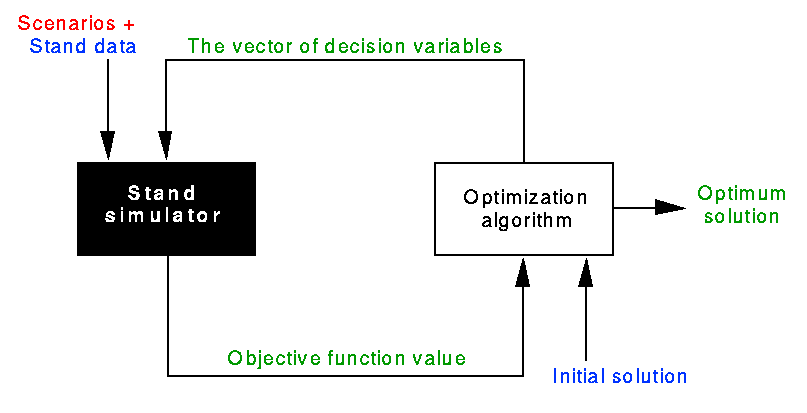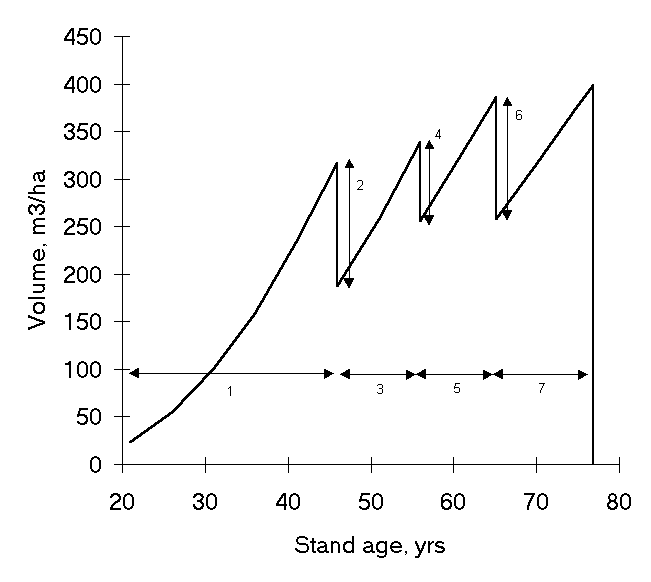
The stand simulator appears as a black box to the optimization algorithm. The algorithm obtains information about the optimization problem by repeatedly sending a vector of decision variables and receiving a value of the objective function.
Stand management decisions are often made at either stand level or forest level. Stand level analysis permits detailed comparisons of silvicultural alternatives and the examination of the effects of different factors, such as prices, costs and available treatments. For these questions, results of forest level analysis are often too case dependent to provide sufficient resolution.
Stand Management Assistant is a program for analyzing silvicultural and economic options of stand management. Based on deterministic or stochastic optimization, the programs allows the user to determine optimum regimes for the specified conditions and view the results of optimization as well as the sensitivity to changes in the prescription (response surface analysis). The program operates on unix operation system workstations. The current version uses a Sun SPARCSTATION and DEC Alpha workstations.
The optimization is based on a "black box" approach illustrated
by the figure below.

The stand simulator appears as a black box to the optimization algorithm.
The algorithm obtains information about the optimization problem by repeatedly
sending a vector of decision variables and receiving a value of the objective
function.
The variables in the optimization problem are defined as seen in the
next figure.

The times between cuts and the intensities of thinnings are decision
variables. Further ones may be the intial density (planting effort) and
the thinning type variables associated with each thinning. The thinning
types are described in the section concerning the program structure.